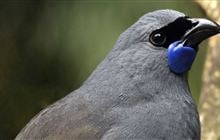Budget 2017: $21m to Battle for Our Birds
Archived content: This media release was accurate on the date of publication.
Introduction
The Budget will provide DOC with $21.3 million to fight rats and stoats in this year’s beech forest mast.Date: 16 May 2017 Source: Office of the Minister of Conservation
Conservation Minister Maggie Barry says DOC will fight this year’s beech forest mast year increase in rat and stoat numbers with a $21.3 million war chest from Budget 2017 for the Battle for our Birds control campaign.
“I can confirm there will be a widespread forest seeding, or mast, once again this year that will trigger a big increase in vermin,” Ms Barry says. “The mast event will affect much of the North Island, the northern South Island and parts of western Otago.
“The Battle for Our Birds 2017 campaign will use $21.3 million of new operating funding in the 2016/17 financial year to undertake one of the largest predator control programmes in our history, across more than 800,000 hectares of land.
“Heavy beech seeding means more food for rats, and triggers an increase in their numbers which in turn causes a spike in stoat numbers, increasing the threat to our most vulnerable native species. Predators kill around 25 million native birds every year and destroy habitat and ecosystems.”
“Trapping and poisoning will start in July this year and run through to 2018, with most work planned before Christmas.”
“We’ll use a mix of ground-based trapping and poison bait stations, depending on local conditions at each site, and DOC will monitor predator levels to determine where best to drop 1080 in hard to reach landscapes.”
“We must continue to carefully and safely use 1080 if we are to protect our precious native creatures from these introduced killers.”
Ms Barry says the long-term solution for predator control will be the successful implementation of the Government’s conservation flagship Predator Free 2050 programme.
“Introduced pests threaten our bird species, our economy and our primary sector, with their total economic cost estimated at around $3.3 billion a year. That’s why we all need to work together to rid New Zealand of rats, stoats and possums by 2050.”
Significant beech masts previously occurred in 2014 and last year and in clusters of mega masts in the 1970s. It is unusual to have two masts in successive years – 2016 and 2017 - but over the last 30 years there have been other clusters of mast events.
Background
- In 2016/17 DOC controlled predators across more than 800,000 hectares of priority conservation areas.
- A five-year study of South Island kākā nesting at Lake Paringa in South Westland shows 30 times as many kākā chicks were produced and survived in the area after 1080 treatment to control stoats and possums compared to the area where no 1080 was used.
- Results for the reclusive rock wren also showed very high nesting success following aerial 1080 treatment in Kahurangi National Park.
- A new study of great spotted kiwi in Kahurangi National Park shows a higher proportion of young birds than normal suggesting they are already benefitting from 1080 use.
- Also in Kahurangi National Park, as part of Battle for our Birds 2016, DOC is monitoring the kea population. So far, all radio tagged kea have survived and 4 out of 6 monitored nests have successfully produced young kea. No kea were lost to 1080 poisoning.
- Water soluble, biodegradable 1080 remains the safest, most efficient and effective method of pest control in the rugged backcountry of New Zealand. The drops are supervised, monitored and carefully controlled to be as safe as possible.
Contact
For media enquiries contact:
Email: media@doc.govt.nz

